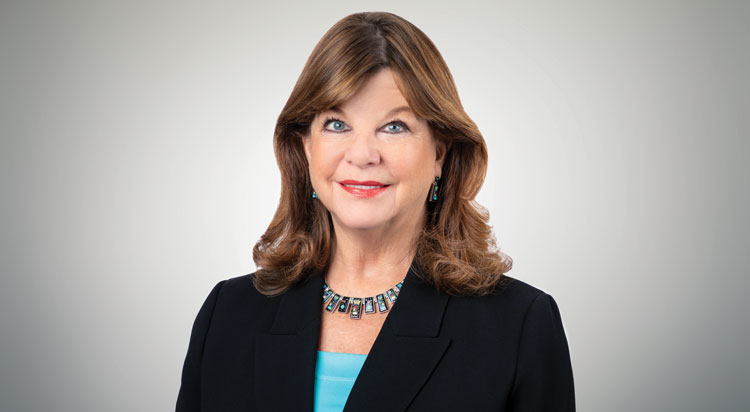Serving as a juror was an unexpected duty during my year as ABA president

Photo courtesy of ABA Media Relations.
“All rise for the jury” is something I have heard scores of times as a trial lawyer. But this time, and for the first time, I heard them as a part of a jury.
As the ABA president, and in the middle of the pandemic, I got a summons from the U.S. District Court in Phoenix to appear for jury duty in May. When I called the recorded line the night before, I was instructed to appear in person at 8 a.m. the following day. When I arrived in the jury assembly room, with the chairs all in socially distanced rows, there were 28 of us. All were there for one civil case.
The court had sent us a questionnaire in advance asking about scheduling challenges, basic personal information and COVID-19 concerns, plus a few case-specific questions. Presumably, those responses were used to excuse in advance those who were unable to serve for this three-day trial.
After watching a well-done orientation video, we were escorted upstairs to the ceremonial courtroom—the largest in our courthouse. We sat in socially distanced and designated seats, answering questions from the court and a few follow-up questions from each side. After a recess during which they sorted out challenges to the venire, eight were called forward to take seats inside the jury box. I was the last one called up. I was now juror No. 8. For the first time, I was serving on a jury.
Pandemic safety procedures made the experience different from “normal” jury service. The jury rooms were not large enough to safely hold all eight of us, so there was one jury room for the four of us who sat in the front row of the jury box and a different room for the back-row jurors. For the two days we heard evidence, we front-row jurors got to know one another in our jury room, but we did not interact with the back-row jurors beyond the occasional “Good morning.” We also ate better than nonpandemic juries because the court provided lunch for us every day, not just the day we were deliberating.
Of course, pandemic safety continued inside the courtroom. Everyone was spread out. Everyone wore masks all the time, except witnesses, who could remove their masks at the start of their testimony (from behind plexiglass) but had to put masks on after 15 minutes.
Even with strong microphones, the masks meant that more than a few questions and answers had to be repeated. When closing arguments and instructions were finished, the judge cleared the courtroom and turned it over to us to for our deliberations.
‘Heart and lungs of liberty’
Our founders believed so strongly in the right to a jury trial that they wrote it into our Constitution. John Adams said: “Representative government and trial by jury are the heart and lungs of liberty.” They were so right.
Everything about my experience bore witness to the majesty that is the American jury system, even with the challenges of a pandemic. Eight citizens with nothing in common came together and worked together to deliver justice to the parties. Each listened carefully and respectfully to the views of others, willing to reassess his or her own views when appropriate. We each brought to the deliberations our own disparate life experiences in assessing the credibility of others, and yet those different experiences often got us to the same conclusions.
When there was a question about a fact, we would review our notes and the exhibits and discuss our recollections of the testimony. When there was a question about the law, someone would go back to the language in the instructions—we each had a copy—and find an answer. The discussion was thoughtful, filled with give and take, and driven ultimately by the desire to do justice based upon the law we had been instructed to apply. We moved, during those deliberations, from being eight jurors into being one jury.
It is the jury, not the jurors, for whom we rise in respect.
This story was originally published in the June/July 2021 issue of the ABA Journal under the headline: “All Rise for the Jury: Serving as a juror was an unexpected duty during my year as ABA president.”
Write a letter to the editor, share a story tip or update, or report an error.


